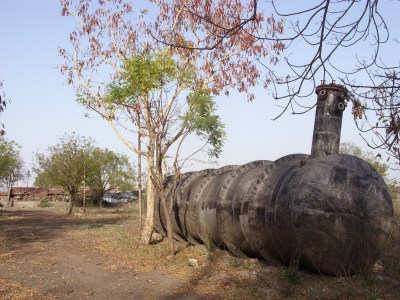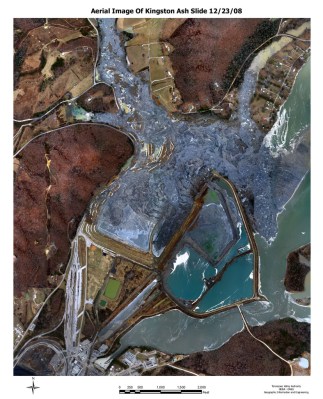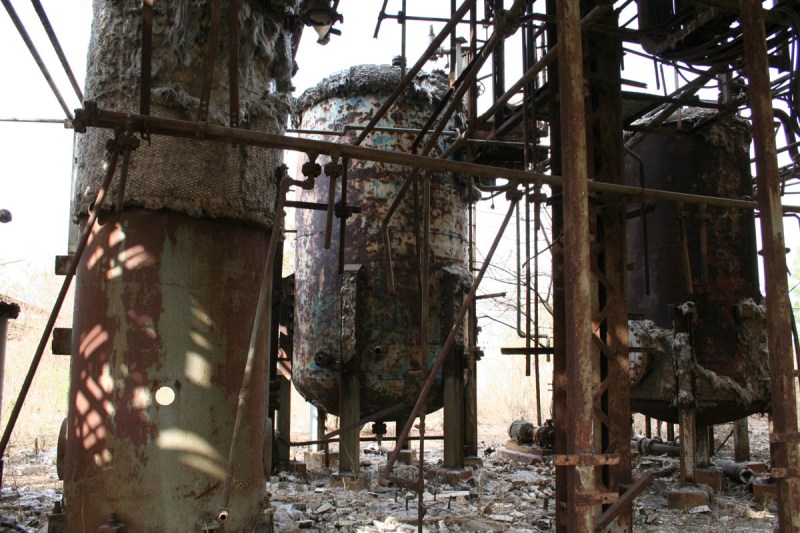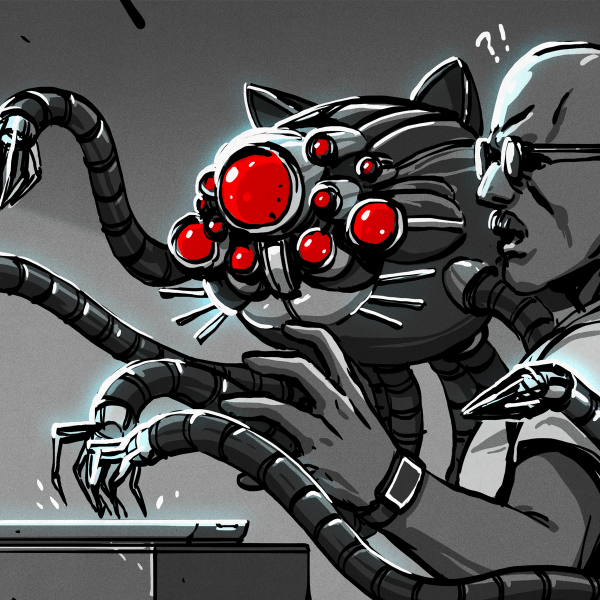Forty years ago, on the night of Sunday 2 December of 1984, people in the city of Bhopal and surrounding communities were settling in for what seemed like yet another regular night. The worst thing in their near future appeared to be having to go back to school and work the next day. Tragically, many of them would never wake up again, and for many thousands more their lives would forever be changed in the worst ways possible.
During that night, clouds of highly toxic methyl isocyanate (MIC) gas rolled through the streets and into houses, venting from the Bhopal pesticide plant until the leak petered out by 2 AM. Those who still could wake up did so coughing, with tearing eyes and stumbled into the streets to escape the gas cloud without a clear idea of where to go. By sunrise thousands were dead and many more were left severely ill.
Yet the worst was still to come, as the number of casualties kept rising, legal battles and the dodging of responsibility intensified, and the chemical contamination kept seeping into the ground at the crippled plant. Recently there finally seems to be progress in this clean-up with the removal of 337 tons of toxic waste for final disposal, but after four decades of misgivings and neglect, how close is Bhopal really to finally closing the chapter on this horrific disaster?
Chemistry Of A Disaster

The Union Carbide India Limited (UCIL) pesticide plant in Bhopal was built in 1969 to produce the pesticide Sevin (carbaryl) which uses MIC (CH3NCO) as an intermediate. By the time the plant was operating, there were ways to produce carbaryl without MIC as intermediate, but this was more costly and thus UCIL kept producing the pesticide using the MIC-based process. This is why by the early 1980s MIC was still being produced at the UCIL plant, with multiple on-site MIC storage tanks.
The process used to create the carbaryl at UCIL was quite straightforward, involving the direct reaction of 1-naphtol with MIC:
C10H7OH + CH3NCO → C10H7OC(O)NHCH3
This is similar to the MIC-free process, which uses the same precursors (phosgene and 1-naphtol) to produce 1-naphthylchloroformate. After this product reacts with methylamine, it too produces carbaryl, but avoids the creation of MIC and the hazards posed by this substance. The counterpoint here is that MIC is easy to manufacture through the reaction of phosgene and monomethylamine, and MIC is highly reactive, ergo easy to use.
Unfortunately this high reactivity adds to the hazards already posed by the chemical itself. It will readily react with just about anything containing an N-H or O-H group in a strongly exothermic reaction. In the case of the UCIL plant, a large amount of water (H2O) had been accidentally introduced to a MIC storage tank, resulting in a violent exothermic reaction that caused 42 tons of MIC to be released into the atmosphere.
Which brings us to the clean-up of such a disaster.
Everything Is Toxic
Unlike with a nuclear accident where you can use a Geiger counter to be quite certain that you won’t come into contact with any hazardous materials, a disaster site like that at the UCIL plant offers no such comforts. The US (NIOSH) health exposure limits for MIC are set at 0.12 ppm on skin for the IDLH (immediately dangerous to life or health), prescribing supplied-air respirators when entering areas with MIC contamination. The exact mechanism behind MIC’s toxicity isn’t known yet, and there is no known treatment following fatal exposure.
In addition to MIC, the now abandoned UCIL plant and its surroundings have been found to be contaminated with other chemicals that were present at the time of the disaster, along with additional toxic waste that was dumped after the closure of the plant. These contaminants include various heavy metals (lead, mercury), carbaryl, 1-naphtol, chlorinated solvents and much more. Ground water contamination has been established at a few kilometers from the UCIL site, as well as in soil, well water and locally grown vegetables, all of which has led to a quiet human tragedy among the (generally poor) population living in the area.
What complicates matters here is that there’s strong disagreement on the exact scope of the contamination. The contamination of the aquifer and groundwater is often disputed by officials, even as epidemiological studies show the clear health impact on the local population across multiple generations. These impacts include cancer, developmental issues and cognitive impairments. People who moved into the area long after the disaster – lured by the cheap land – found the soil to be heavily contaminated and causing health issues. In an admission of the poisoned ground water, the local government has since put a clean water supply in place, using pipes that carry in clean outside water.
Meanwhile, at the former UCIL site, there are multiple 1970s-era (mostly unlined) solar evaporation pits which were used for storing chemical waste. These pits were never emptied, unlike the storage tanks and vats elsewhere on the terrain. This means that these abandoned pits have to be fully decontaminated somehow to prevent even more of the waste that’s still in them from leaking into the groundwater.
Then there are the hundreds of tons of hazardous waste that have been stored without clean plan on what to do with them. The 337 tons in leak-proof containers that have now been moved for incineration are the first major step after a trial run with a batch of 10 tons in 2015, with the emissions from this incineration deemed to be acceptable. In addition to these thousands more tons have been buried or stored elsewhere on the plant’s site.
An Exclusion Zone That Isn’t

A mostly appropriate response to a toxic spill is exemplified by the 2008 fly ash spill at the Kingston Fossil Plant in Tennessee. After a coal ash pond ruptured and spilled heavy metal-laden fly ash into the adjoining Emory River, 40 homes were destroyed and covering 300 acres (121.4 hectares) in toxic sludge. This was the largest industrial spill in US history.
These fly ash pools used to be unlined pits, not unlike those at the UCIL plant. Those involved in the clean-up suffered a range of health-effects, with dozens dying. The plant owner – TVA – ended up having to purchase the contaminated land, with the clean-up resulting in a partial recovery of the area by 2015 and by 2017 the river was deemed to have ‘recovered’. The home owners in the area did not have to live in the sludge, TVA was on the hook for remediation and payment of compensation.
Remediation mostly involved removing the countless tons of sludge and disposing of it. Current and new fly ash ponds had to be fitted with a liner, or be shut down, along with a string of new safety measures to prevent this type of accident.
In the case of the UCIL plant at Bhopal, the affected area should have been turned into an exclusion zone, and inhabitants relocated, pending environmental assessment of the extent of the contamination. Even in the Soviet Union this was possible after the RBMK core steam explosion near Pripyat, which resulted in today’s Chornobyl Exclusion Zone. Unlike radioactive isotopes, however, heavy metals and toxins do not quietly go away by themselves if left alone.
Considering the sheer scope of the contamination around the former UCIL plant in Bhopal, it does seem realistic that this area will not be suitable for human habitation again within the next hundreds to thousands of years, barring a thus far unimaginable clean-up effort.
Featured image: Deteriorating section of the UCIL plant near Bhopal, India. (Credit: Luca Frediani, Wikimedia)

















In the form of polyurethane, Gorilla Glue, Imron airplane paint, we consume isocynates without even thinking about their effects, yet we vilify lacquer because of its VOCs.
Even ordinary non-catalyzed polyurathane can be nasty when sprayed. The common-breezeway door came open and fumes came into our apartment. The funny thing about polyurathane is: after a while, you don’t even notice that you are coughing. I was so angry that I stormed over there, spitting out mouthfuls of mucus into the grass. I was so angry at the worker, that I stood watching him spray–without proper respiration equipment. I walked away, saying nothing, leaving him to his fate.
Non sequitor of a comment.
polyurethane
Isocyanates in particular. TFA involves Methyl-Isocyanate which is part of that group apparently.
It’s the bit of Methylene diphenyl diisocyanate (MDI) in the polyurethane they were spraying down that you almost certainly reacted to. People’s reaction varies widely, and you can get a rash or congestion like a nasty allergic reaction. In severe cases people can have an asthma attack or even anaphylaxis.
But for most of us, it’s no big deal. So people get pretty lax about PPE. Long-term it’s not the worst thing people deal with, which is why we’re not all dropping dead from touching up our projects with a few rattle cans of poly.
So you probably left that man to his fate of dying in his old age from something else entirely. How dramatic.
We used to call it “export death syndrome” when I was on debate teams back in the 1980s. If you make a profitable something illegal in one location, just move it to somewhere it is still legal — and damn the consequences.
IIRC the Bhopal plant was a mirror of another Union Carbide plant in West Virginia(?) which might have produced a similar disaster if the dice had fallen differently. Which is not to say that companies don’t shop around for cheap labor and lax oversight. But they also don’t take any more care with American lives than Indian ones except where someone forces them to.
That’s important to bear in mind when Koch-funded propaganda tries to convince you that you hate government regulation. Union Carbide (now Dow Chemical) would gladly Bhopal your family, and if you don’t hear about that happening all the time, maybe the government is spending enough on life-saving bureaucrats and red tape.
It wasn’t a mirror – it was, at the behest of the Indian government, “indianized” – to use locally available products/materials. This included reducing safety redundancies from 4 to 1, and using carbon steel for valves that was inappropriate. Union Carbide inspected the plant and instructed UCIL to address numerous safety concerns well prior to the disaster. Ultimately it was the local UCIL employees that were found guilty of negligent manslaughter.
Afterwards, UCC paid $470 million, built a couple hospitals, and created a $100 million fund from selling their share in UCIL. Interestingly, only $180 million went to the victims…any ideas where the rest went, after it was received by the government?
Yep, and why was the second plant in West Virginia? Because The Eternal Manager doesn’t care about anything there and basically hates people living there.
Also, the assertion that the only difference between one having a disastrous accident vs the other being nothing but luck… That’s baseless. I suspect there were many reasons why the American plant didn’t release a cloud of WWI trench gas out into Appalachia, as the other commenter here mentions.
That’s a constant problem. If there is a demand it will happen, no matter who what where or how.
The US in the last 4 years tried tons of times to block the drilling of oil in different ways. Banning the building of a new pipeline that would have lowered pollution during transport and make it safer, bans on surveying for new oil fields, bans on surveying methods, bands on drilling in already operating fields, etc etc etc. Most got blocked by judges, but it did result in major international tensions, spikes in fuel prices which hurt poor countries the most (and even semi-wealthy countries like Belgium) and as a direct result, China started to rapidly build FPSO’s and oil rigs, that are now placed all over the world in large numbers. And China doesn’t care one bit about safety or the environment.
Same with cows. If you want cows to cause the absolute lowest amount of pollution, you have to put them in area’s with very specific climates so they have the right grasses with the right qualities. You end up in eastern England, the Netherlands, Belgium and a tiny bit of northern Germany. All of those countries openly state they want to get rid of them, so you end up with farmers that are already leaving in large numbers and the cows end up being raised in other countries where they don’t care about the cows or the environment and the climate isn’t good for raising cows in large numbers, so you have more pollution in the end.
It’s central planner syndrome by statists. It’s short-term thinking to gain instant gratification, without being capable of seeing the end result of their actions, causing much more harm in the future.
Turn the contaminated area into a prison camp and sentence the company executives to serve time there. Two birds, one stone.
Fortunately, Dow Chemical agreed to take full responsibility after purchasing Union Carbide:
https://www.youtube.com/watch?v=LiWlvBro9eI
Lol. That was fake. A group called the yes men pretended to be from dow and got on the actual bbc to do this interview. Dow had to then come out and say no, they are not going to do the right thing. Lol, or not really.
:)
I highly recommend checking out other Yes Men videos, and movies.
https://theyesmen.org/movies
The yes men were almost sued over this as it caused Dow stock to drop hugely in price.
+100 points for “The Yes Men” . Their work is great example of hacktivism. I highly encourage those unfamiliar to check out their movies. I learned about the extent of the Bhopal disaster because of them.
I was looking at the comments to see if anyone would post about the Yes Men save the world. :) I’m gonna check that website now.
Believe it or not, I reside about a mile away from the old Union Carbide plant in South Charleston, West Virginia. Now part of Dow Chemical, Union Carbide had some clout in the area. With Rhone Poulenc, FMC and Dupont along the water ways…they called this area the “Chemical Valley.” Yes, we had a water crisis in 2016. No, we don’t have any mutations west of Blaine Island (Part of then Union Carbide where they still process some “interesting stuff”.) The clean water made some good H2O2 around here.
Better living through chemistry, eh?
There’s a Dupont Chemoers plant in my country (Netherlands). Evil company. They make teflon. The entire area around the plant, where almost 300.000 people live, has poison (GenX) in the drinking water. A few years ago they got caught dumping the poison in the river and the municipal decided to give them a permit to dump more of it in the river. A large area around the plant, where people live, is infected. The ground in peoples gardens is polluted and treated as chemical waste when taken to the dump. It’s not good.
HaD editors, when you mention a city, please include that nation that the city is in. I could infer it was in India but only due to the name of the company which is first mentioned when getting into the details. It doesn’t matter if it’s an [in]famous place or not, some of us are oblivious.
And I wish 20th century history was a requirement in US public education. I’m a bit concerned when adults are finding out about a 40 year old disaster for the first time. We’re in for a rough ride if we haven’t learned from history.
I don’t mean to sound critical of you specifically. I too was rather short-changed on my public education. I think I only know about Union Carbide disaster in Bhopal because of television reporters and journalists returning to the topic on the 5 and 10 year anniversary.
Too much history has happened for people to remember all of it.
It’s Gravis. If they’re not intransigently whining about HaD, something must have gone wrong. I really pity them, it’s got to be a miserable existence being the living embodiment of the “Ackshewally”-guy meme.
I’m Dutch and never heard of this. Why would I? Do you know about the Sint-Elisabethsvloed disaster from 1421? That should be common knowledge then too, right?
Not everyone knows everything. Don’t ever expect that because it’s simply not possible, especially when it’s something from far away and a long time ago. I care more about the people I know and the people in my village than I care about people in a city near me. This article was the first time I heard about this disaster. I do know about a 21 meter long boat that ran aground in Norway a day ago, and a tugboat that capsized in Indonesia on Monday, or about the fuel barge in Istanbul with engine failures, or the anchor that was found that caused the Estlink 2 cable to be damaged. And in a week or so I’ve seen so many more articles that I’ll probably forget about these because they aren’t interesting enough to remember. Just things that happen constantly.
Of course it will never get cleaned up, it’s too good a source of money – and it’s not out of the question that the accident itself was caused for this purpose. Theoretically, the Madhya Pradesh government has been supervising cleanup efforts for 40 years, and has taken direct ownership and control of the site since 1998. The site isn’t even that big, and it’s in the middle of a huge city (~2.5 million). UCC paid their fines in 1989, $470 million, plus building a few hospitals. Total compensation to the victims, up until 2007 was $180 million. $470 million comes to $785 million in 2007. There was an additional fund of $100 million set up by UCC after the sale of UCIL.
Amusingly, the courts mandated the completion of cleanup for the third time on Dec 3rd 2024….
If there is money/taxes to be made cleaning it up then expect the definition of clean to get stricter. If it is costly or expensive in taxes expect the definition of clean to get relaxed.
Clean changes based on who it costs and who makes money on it.
there’s also money to be made in being able to point at the mess and yell about it…
So the US company UCC (Union Carbide Corp) owns this catastrophe in India (as Union Carbide India was majority-owned by the Union Carbide Corporation (UCC) of the United States). They then paid a bit out in compensation to families of the dead and injured, then refused to clean it up as it was too expensive. This part of UCC just re-inventing itself, and being folded in as another profitable sub division of the US company Dow Chemical.
No, not at all. Go read up on this, the causes and cleanup issues are much more complex.
Name that tune:
Times Beach, Rocky Flats, Love Canal and Bhopal…
The latest mix of “We didn’t start the fire” should’ve mentioned Bhopal.
Not even remotely a hack.
If you’ve ever stumbled upon those United States Chemical Safety Board videos on YouTube, where they animate the sequence of events of a reactive chemical disaster, know that the creation of the CSB was in part a reaction to Bhopal.
Those videos by the USCSB are the best, right up there with the best disaster documentaries on Discovery and kin (Mayday, etc.).
the question we should be asking is, why we would consider toxic chemicals of this nature as a pesticide? Yes, they kill insects, but they can easily kill us. Biological build up of these toxins find their way into the food chain over time and overall health risks happen as a result.
You want to do something positive for the environment? Make sure you look at what the chemistry is behind the products you use and consume. You can’t avoid them all, but you certainly can avoid the worst.
“Make sure you look at what the chemistry is behind the products you use and consume.”
I’m so looking forward to RFK2 taking office in D.C.
Compounding this awful disaster and negligence:
They noticed that the gas was leaking and decided to take care of it…. after a tea break.
I don’t think I could sit for a spot of tea knowing death was possible any moment.
hthttps://en.wikipedia.org/wiki/Bhopal_disaster
Well the fixed link is here – along with the fact they decided to take a tea break AFTER:
knowing several of their safety features were disabled
the plant had numerous injuries in the 5 years prior
they took readings that were dangerous and assumed they were a malfunction
…. then calmly evacuated themselves with an alarm that rang SEPARATE from the one facing the city, which shut off immediately….. because they did not want to alarm people.
Yup. “Negligence” is being kind.
“there is no known treatment following fatal exposure.”
I don’t think there is a known treatment following the fatal exposure of anything.
Well, other than going through their clothes looking for loose change.
Rajiv Ghandi let it happen because he wanted trade deals with the USA, and he was prepared to kill his own citizens if needed. He deserved to be assassinated, it took a Tamil to do it.
The Indian government should have declared it a terrorist action by the USA, and acted accordingly by incendiary-bombing the site, which would have solved the toxicity problem in short order, or if all else failed, obliterated it with a tactical nuclear weapon. That would have shown the world not to mess with India, when things like this happen, the gloves are off.
India should have nuked or napalmed their own city to get back at the US?
Yeah, makes sense. Like “saving the environment” by burning SUVs and blocking traffic so hundreds of vehicles are now idling instead of getting to where they’re going and turning off.
Considering all the corruption in the indian government and business sector, its no wonder an accident like that happened. When safety requirements are easily bent by crossing a few palms with silver, things simply cant work out.